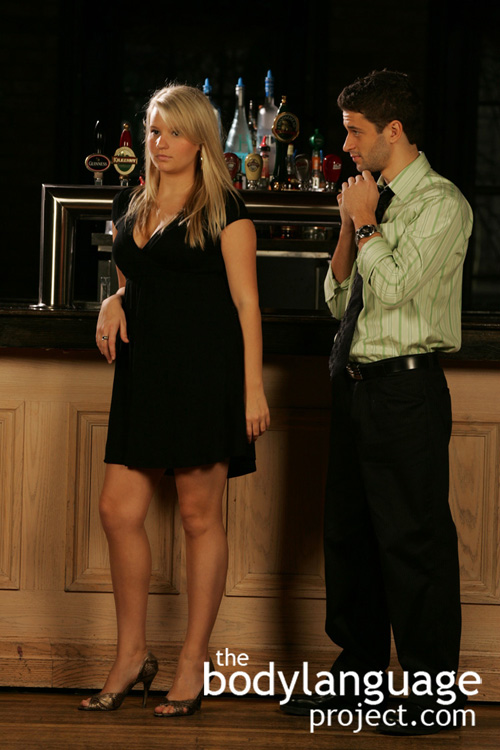Is body language a “learnable skill” and can it therefore be faked? The answer is yes and no. The vast majority of the more prevalent body language can be learned. For example, keeping your hands out of your pockets or using the hands expressively to remain honest and open, or keeping the hands away from the face to come off as more confident as easily learned through conscious thought and repetition. However, a new area of study reveals that there is a whole new set of cues that are much more difficult to control, if not impossible.

A furrowed forehead can happen in a split second and reveal negative emotions.
These are called microexpressions or microsignals. These signals can be used to decipher liars from truth tellers. Microexpressions appear as furrows, smirks, frowns, smiles and wrinkles and can offer an accurate, though fleeting, window into emotions. These microexpressions are controlled by muscles such as the fontalis, corregator and risorius and they are provoked by underlying emotions that are nearly impossible to control consciously. One of these emotions is the fake smile to show appeasement in lieu of genuine joy or happiness. The fake smile is obvious, as will see later, because the lips are pulled across the mouth, but the muscles controlling the eyes, play no part.
With specialized computer software, researchers have been able to detect these signals. Computers were employed because the signals flash across the face in fractions of seconds making it hard for humans to pick the signals up consciously. Slowing down video on high speed video cameras and playing it back repeatedly to observers can also be used to detect the expressions. So part of the story is that microexpressions are difficult to detect and control but the rest of the story tells us that if they exist (and they do), that we must at some level have evolved the ability to read and detect them. Therefore, we must be cautious about assuming that just because they happen so fast, that they can’t be picked up and conversely that we can easily fake our way through the nonverbal channel. It just might be that the subconscious intuition is hard at work giving us that sixth sense feeling that can’t trust someone despite not quite being able to put to words. The reason, it seems, is a combination of microexpressions and our intuition.
Some researchers will tell us that the face is the easiest part of our bodies to control, but this isn’t entirely true and is a poor excuse for the full story. If our faces were so easily controlled, why have botox treatments to freeze up our faces with low level toxins in order to erase wrinkles? Why not just stop using the muscles altogether and therefore avoid suffering from facial wrinkles during the aging process? The simple answer is that it’s not the simple. While our faces are in fact under a large part under our control, we can’t always be focused on it, lest we not be able to focus on anything else. Not the least of which is controlling our speech. Can you imagine what it would be like to construct sentences free-form while trying to remain expressive but at the same time avoid contracting “inappropriate” facial muscles (whatever they might be)? When we talk or see, or do, our faces naturally respond to what is going on around us because they are closely tied to our mind and our emotions. It is a cause and effect relationship, or even an arms race, and it precisely because the face provides such a vast amount of information, that we are so tuned into reading it.
Other ways to spot a fake is with regards to incongruent body language. That is, language that is inconsistent with either, the words being spoken, and the nonverbal language that accompanies it. Women are particularly adept at reading the whole picture since they are naturally more perceptive, can usually pick up on the subtleties in others more quickly then men and have been shown by research to be able to perform multiples tasks at once. To women, something just won’t seem right, their sense will “tingle.” We call this the “female intuition”, but thankfully, with practice men can develop their skills just as readily and that is what this book is all about.



